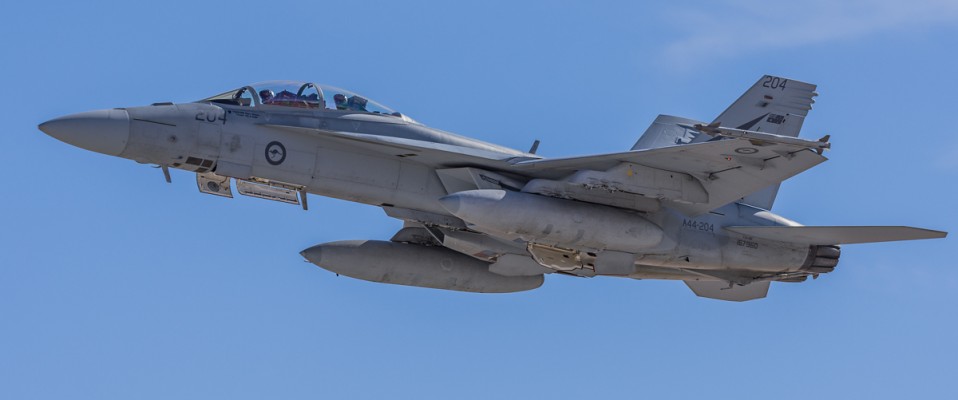Royal Australian Air Force Deploys To Red Flag 16-1
Article by Jaryd Stock
Photos by Steven Valinski (unless noted)
Lets go over it again!
The Sun rises over the land Down-Under, morning dew accumulated from the night before evaporates from the warmth of the golden glow permeating from the east as light ushers forth a new day in Spring. As members from the Royal Australian Air Force (RAAF) leave their loved ones at home ahead of a new day for one of the best jobs in the world, their concentration is transfixed ahead of them they are eager to accomplish the tasks set, ready for one of the biggest exercises the RAAF have ever participated in. Arriving to RAAF Base Williamtown they greet their fellow personnel as they check into their stations with coffee in hand as they settle in to their work. Their Role? To make sure that every possible scenario is covered to make sure that nothing will stop one of the biggest deployments to the continental United States that has ever been achieved, and to ensure that all four Squadrons from the various Air Wings based at Williamtown, Amberley, Tindal and Edinburgh are ready for RED FLAG 16-1!

They outline and mitigate every possible scenario that could go wrong…from poor weather to the non- availability of aircraft, to key personnel getting ill…everything is checked and rechecked. Nothing was going to stop the RAAF’s determination in making sure that 14 aircraft and 410 personnel would arrive at Nevada on time. As those days rolled on into months, and with determination in making sure everything would work, Commanding Officer of the Air Task Group’s (ATG) deployment to Nevada, Group-Captain Phillip Gordon stated to his team every time “let’s go over it again!” …making sure the RAAF’s biggest deployment over three weeks would go according to plan.
Viva Las Vegas
When you read about air forces or military units deploying from one part of the world to the other there is a tremendous amount of hard work from many people from many different units that make the deployment happen. Deploying forces, especially over long distances, is a very complex process. While often the public’s assumption is that forces deploying in that fashion on short notice is more of an instant process. The truth is, as with the RAAF’s deployment to Red Flag, every inch of robust planning into every deployment is vital to ensure mission success. It is the determination in planning for these events that give us, the public, an insight into the various RAAF personnel deploying to Nellis Air Force Base in Nevada and the underlying thought process to carry out objectives set.
GPCAPT Phillip Gordon said in an interview with the media how he was extremely proud of the team that deployed and also the support personnel back in Australia who didn’t deploy. “Every single person that participated in Red Flag to make it a success is something I’m really proud of”.
“Only people who have tried to deploy multiple fighter squadrons with all their personnel and equipment over great distances can really appreciate the complexity of the task and how much can go wrong. We spent months planning for every eventuality; aircraft diversions, poor weather, fallout of tankers or airlift. Because of our robust planning, or good luck, or both, we managed each eventuality that arose and got all our aircraft, people and equipment to Nellis AFB on time with no major issues. And funnily enough, as I speak, we are on track to complete a successful redeploy”.

GPCAPT Gordon added: “that as a pilot, yeah we’d like to assume that logistics away is something that will just happen, but it is important to recognise the amount of work that takes to accomplish that, it took us a week to deploy 15,312 Kilometres flying from Australia island hoping from to Andersen AFB in Guam to Hickham AFB in Hawaii eventually arriving in Nellis. We were being supported by our Air Mobility Group’s units with 33SQN and 36SQN with their KC-30A’s and C-17’s respectively, we left on time we arrived on time and with all our people and equipment, and I might add and I say this very proudly that not many Air Forces can project that sort of power over great distances as we have”.
Confirming Australia as one of the U.S.’s greatest allies, in a coalition force comprised of 39 units from the USAF, RAF and RAAF for Red Flag 16-1, GPCAPT Gordon was the Commander of the Australian Forces for the exercise as well as being apart of the exercise training audience, having as he states, “being fortunate” to fly on four missions in a 75SQN F/A-18A. GPCAPT Gordon was also Vice Commander of the Air Expeditionary Wing (AEW) that was formed from participating squadrons from the three participating countries at Red Flag 16-1. Being an integral part of command structure, and giving valuable insight to those under his command, also having experience in deploying as a part of various exercises before, GPCAPT Gordon explains his role at Red Flag as VC: “I worked closely with the AEW Commander USAF Colonel Derek France to help build an effective coalition team and achieve the exercise training objectives. In practical terms I oversaw the planning, briefing, execution and debriefing of one mission each day (with Col France handling the other) to provide leadership and direction to the participating aircrew”.
16-1 The Australian’s Role
For the Australian’s perspective on the exercise, Red Flag 16-1 was an opportunity to participate in large-scale aerial air/ground strike combat manoeuvres, an experience that is not found anywhere else in the world. It offers a unique experience, one that is highly valuable for aircrews to gain proficiency and currency in aerial combat in a complete advanced integrated coalition force. So, when it comes time for an actual combat deployment for these crews from the the four participating SQN’s, they are ready and have a better understanding of the complexities of combat, especially Major Combat Operations (MCO) consisting of joint forces.

With, typically, four Red Flag exercises per year, knowledge and a chance to explore new avenues regarding tactics and how to better understand and gain more of the tactical advantage for participating units grows. With that, there can be minor tweaks units can employ or suggest in lessons learned from the previous Red Flag exercises. Feedback often comes from the year, or exercise, before to Red Flag commanders on what units would like to work more on in order for crews to become some of the best fighter pilots in the world. Red Flag 16-1 had a few minor changes on what Blue Forces were able to do. In an exchange to make sure Red Air (enemy) numbers were consistent and presented a formidable adversary during various Red Flag sorties, some units who flew a particular day as Blue Force would swap the next day to be a part of the Red Forces. In Australia’s case, being the first time the RAAF had deployed 1SQN using the F/A-18F Super Hornets and also the F/A-18A+ Classic Hornets from 75SQN enabled the ATG to fully integrate together, and with other forces, which is critical in spanning the various aspects associated with Air to Air and Strike missions which as GPCAPT said was a “very big deal for us”.
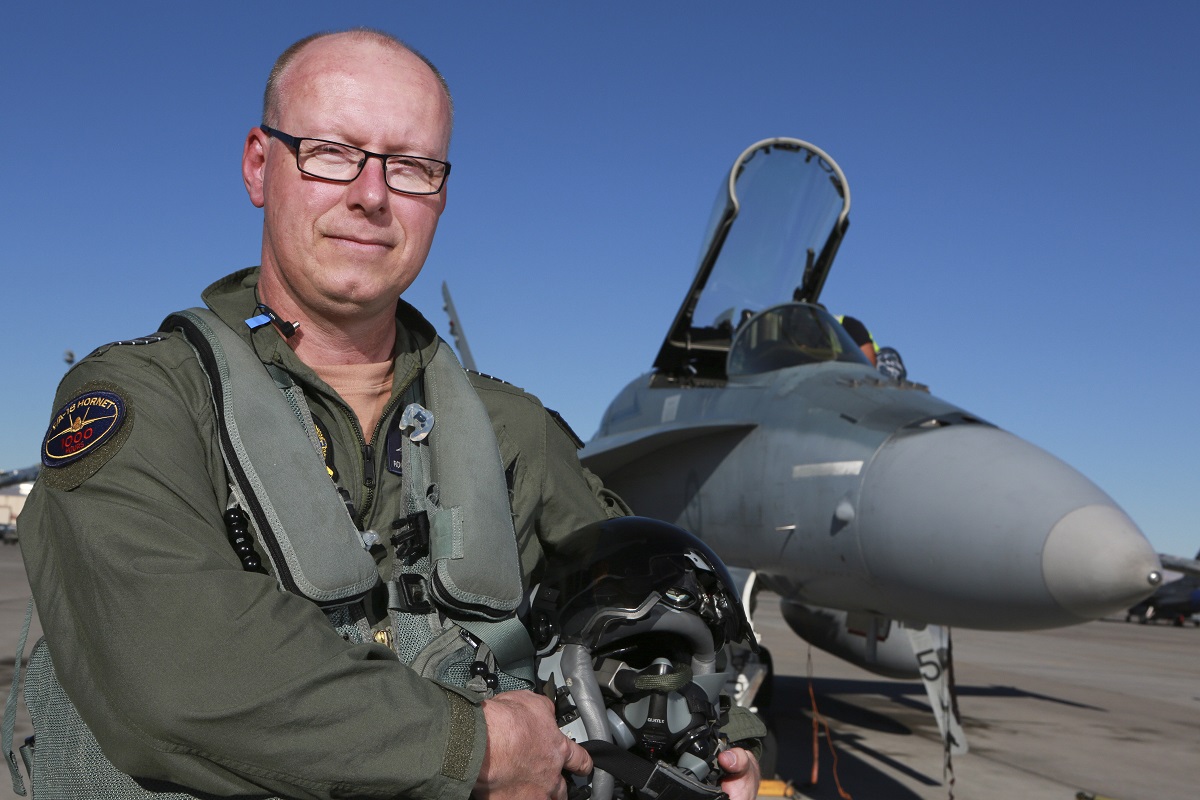
Excercise Director for Red Flag 16-1 Group Captain Phil Gordon, from No 81 Wing alongside a No 75 Squadron F/A-18A Hornet on the Nellis Air Force Base flightline.
© Commonwealth of Australia, Department of Defence | Image by: CPL Nicci Freeman
He goes on, “We are a part of this big coalition here in the AEW, we are fully plugged into the mission planning and its a great opportunity for each of the countries participating units, all to learn a bit more about each others capabilities and build a great team that plays off each others strengths of the individual systems and minimises and mitigates the weaknesses, so we have different scenarios each day that provides different tactical problems, so with that we develop a solution with it we then go flying with those objectives in hand in order to come away with a 100% success rate”.
“So again develop a solution, brief it, then fly it and learn a bunch of lessons from it, but we are working on becoming a proficient coalition that’s what this is exercise is about and we are fully integrated with the U.S. and the UK in the missions and we’ll fly all of the elements in the roles for missions…from strike, dynamic targeting, with the air control etc etc and with our command and control aircraft such as the E-7 and AP-3C they are an integral part of the constellation of trying to fix and locate targets and then feed that information to the various aircraft that are participating in their various roles”.

The amount of time that it takes, and the complexity behind planning individual missions so that each mission can be executed effectively requires a high level of commitment. Long work hours are the norm at Red Flag much like it would be during combat. GPCAPT Gordon comments on this level of commitment, “On this exercise we go through about a 10 to 11 hour mission planning process we employ and plot a disciplined approach to examining the tactical problem and developing a solution packaging the forces, then working out the deconfliction or establishing where the good guys and where the bad guys will be, and then allocating targeting etc. So that’s about a 12 hour for the brief, fly the mission then debrief on the following day. And we share the responsibility who gets to come up with that plan, it’s fair to say that mission commanders do it tough as from the beginning as they have nothing to start with and our guys and girls are very good at watching and seeing what worked the day before and plagiarising that and tweaking it with their own little Aussie twists”.
Shaking its Tail Feathers
Since its very first deployment a few years ago, controlling aircraft in the search for missing Malaysian Airlines 777-200 flight number MH370, the RAAF’s E-7A Wedgetail, based at RAAFB Williamtown, is proving to be one of the most adept and quintessential Airborne Electronic Warning & Control (AEW&C) aircraft systems ever developed. The work carried out by its crews from 2SQN is getting all the praise they deserve not only from Commanders from within the RAAF such as GRCAPT Gordon, but also U.S. commanders and allied partners in the Middle East Area of Operations (MEAO), where the SQN has a detachment with one aircraft operating in the war against ISIS in Iraq and Syria.
APD had the privilege to interview detachment commander for Red Flag 16-1, Squadron Leader (SQNLDR) Glenn Salmon about the Wedgetail’s and, in turn, 2SQN’s roles and their deployment from Williamtown for 16-1.
“We deployed 35 personnel out of the 410 that have deployed to Nellis AFB with that we have maintenance staff, mission support, operations staff, intelligence and aircrew. And these exercises benefit all of us deployed to this exercise, one of 2SQNs objectives on Red Flag is to strengthen our ties and reputation with our U.S. and UK allies – many of whom we have worked directly with on Operation Okra in the MEAO and many of whom we will end up working with whilst deployed in the future. The exercise provides us the opportunity to display the world class level of command and control that we are becoming known for in the Middle East as well as highlighting our capabilities to coalition aircrew and leadership who may not have had the opportunity to work with us yet. We take great pride of the work we have conducted already and that is great for our reputation and we all feel it is well deserved”.

© Commonwealth of Australia, Department of Defence | Image by: CPL Nicci Freeman
The importance of becoming a fully integrated team is second to none for the command and control units and the interoperability or knowledge and trust gained is never taken for granted. Even though there is a leap in capabilities the E-7 offers compared to the E-3 Sentry, surprisingly not all is that different between the crews and aircraft as both are working on providing as much experience for the crews from their respective units for real time missions. SQNLDR Salmon states, “Whilst the E-3 and E-7 are generations apart in their technology, we still speak the same language and are working together to provide a common goal – that of battle-space management. The two platform’s differing approaches to the task provide a great opportunity for us to see how somebody else tackles the same problem and in doing so, refine and validate our own procedures.”
He goes on, “Exercise Red Flag provides the most realistic simulation of what actual operations such as Operation Okra where we are operating at the moment will involve. As our contribution in the Middle East continues, we are constantly increasing the number of our aircrew, maintainers and support staff that have operational experience. Our USAF counterparts are in a similar situation. This means that we get an excellent melting pot of senior and junior people from both countries that can share and collaborate on their experiences from both previous exercises and more recently how we all are handling operations in the Middle East.”
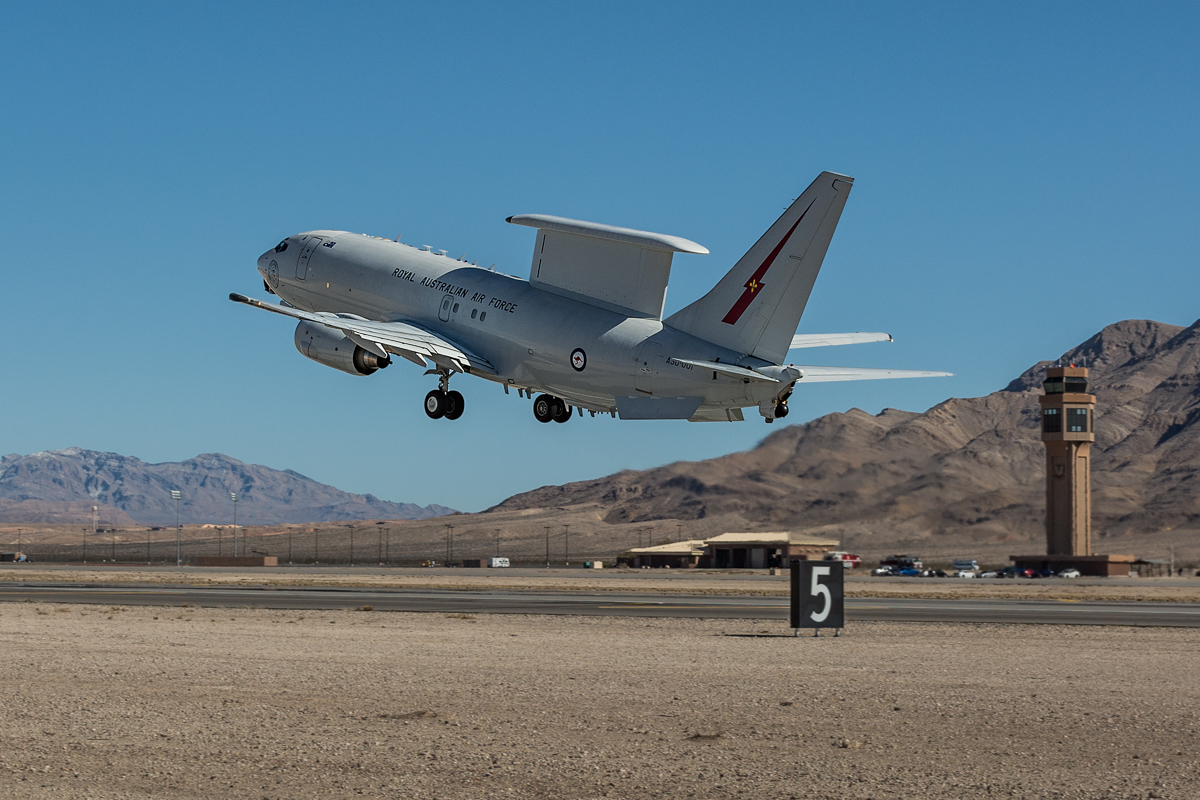
SQNLDR Salmon also provides a rare insight into how personnel that serve in the RAAF feel about their own brethren, but also about their country and their fellow Aussies and how they sometimes don’t want to leave their families behind in order to serve but do it for their country and for the Australian public and the public of Australia’s allies!
“I have an immense sense of pride at what 2SQN has achieved over the past 3-4 years. The capability of the aircraft and the people that operate, support and maintain it has grown at an incredible rate. This has been borne out in our experience supporting the huge effort to search for Malaysian Airlines flight MH370 off the west coast of Australia and more recently our 18 month (and counting) presence in the Middle East”.
“The level of service provided by the E7 and the personnel of 2 SQN in support of these operations and our regular activities back home is second to none. I still get a great sense of enjoyment out of flying the aircraft and it is a great privilege to be involved with the unit in this our 100th anniversary year”, he added.
The demands of the job, including significant amounts of time away from home and loved ones, can be difficult for people from time to time. However, the sense of reward, accomplishment, camaraderie and the knowledge that we are making a genuine contribution to operations on behalf of Australia is what makes it all worthwhile”, SQNLDR Salmon noted.
Centurions, Magpies and Orions
The Fighting First returned to Nellis for the first time since 2009 where 1SQN participated at that time in Red Flag 09-3 operating the muted loved F-111C/G ‘Pig’. This time they participated in Red Flag 16-1 with 6 F/A-18F Super Hornets and 107 personnel. This exercise marked the first time since the start of Super Hornet operations 1SQN deployed to Nellis utilising the strike aircraft.
APD spoke to Commanding Officer of 1SQN, Wing Commander (WGCDR) Steve on the Squadrons mighty return to Nevada, and in particular, since the SQN deployed to the Middle East for Operation OKRA, to find out if it was paramount for the SQN to retain currency in large scale air based exercise. He states, “In part yes. We were fortunate that immediately after our return to Australia post OKRA, we were immersed in the final months of the Fighter Combat Instructors Course (FCI) and it’s culmination at Exercise ACES NORTH (FCI is the RAAF’s Air Combat Group’s version of Top Gun, training the elite fighter pilot). As such we had a rapid refresh on the perishable air-air roles. Therefore our participation at Ex RED FLAG was a consolidation of our multi-role competencies, combining both Strike and Air to Air capabilities the ‘Rhino’ brings to the RAAF.”
WGCDR Steve continues, “With that we bring a very capable capability that bridges the 4th Gen and 5th Gen spectrum. This allowed us to integrate well the entire RED FLAG package, fulfilling any of our multi-role missions well and able to perform very credibly as mission, and package and lane commanders whenever the opportunity presented itself.”

Having been deployed to a real time combat environment in the Middle East a lot of work has been carried out on integration already. Hence being able to gain a lot of experience working with coalition partners already was highly valuable. When asked if 1SQN had shared their knowledge and lessons learned to enhance other units participating in the Red Flag, WGCDR Steve stated: “The missions in Ex RED FLAG were based on a high intensity contested and degraded operational environment. As such they were quite different from those predominantly flown during Op OKRA. That being said, the sharing of similar combat experiences amongst the exercise aircrew was another highlight, and contributed to forming a strong team approach to the task at hand.”
“Thus, the interoperability between the three countries was very high. This comes in part to investing in the common enablers that allow for networked air combat operations, and in part from investing in the resource intensive training regime that each of countries know is vital to maintaining the air combat edge. For 1SQN in particular, we demonstrated again that we are a fighter squadron that can seamlessly integrate into a U.S. led air combat component.”
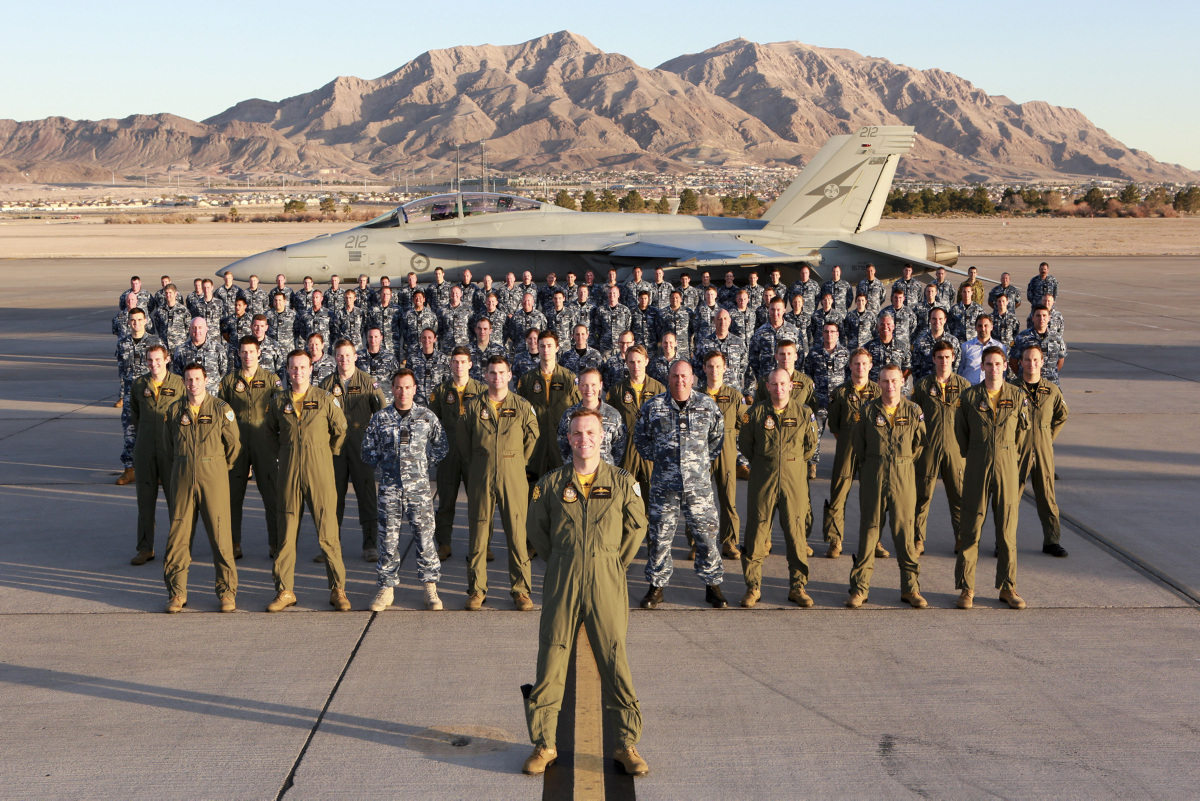
© Commonwealth of Australia, Department of Defence | Image by: CPL Nicci Freeman
1SQN is celebrating it’s 100th anniversary in 2016 and in January the men and women along with WGCDR Steve who are serving in the ‘Fighting First’ took time to reflect on that special moment before deploying to Nevada. “2016, the centenary of our squadron is a very special time for us. It was a unique experience for all squadron members on 06 Jan when we paused to reflect on the history, tradition, sacrifice and service that has gone before us. To then deploy for Ex RED FLAG and have the opportunity to share that with our American and British friends brought home even further the depth of the history that we are privileged to hold in our custody”, stated WGCDR Steve after being asked on what it meant to reach that milestone.
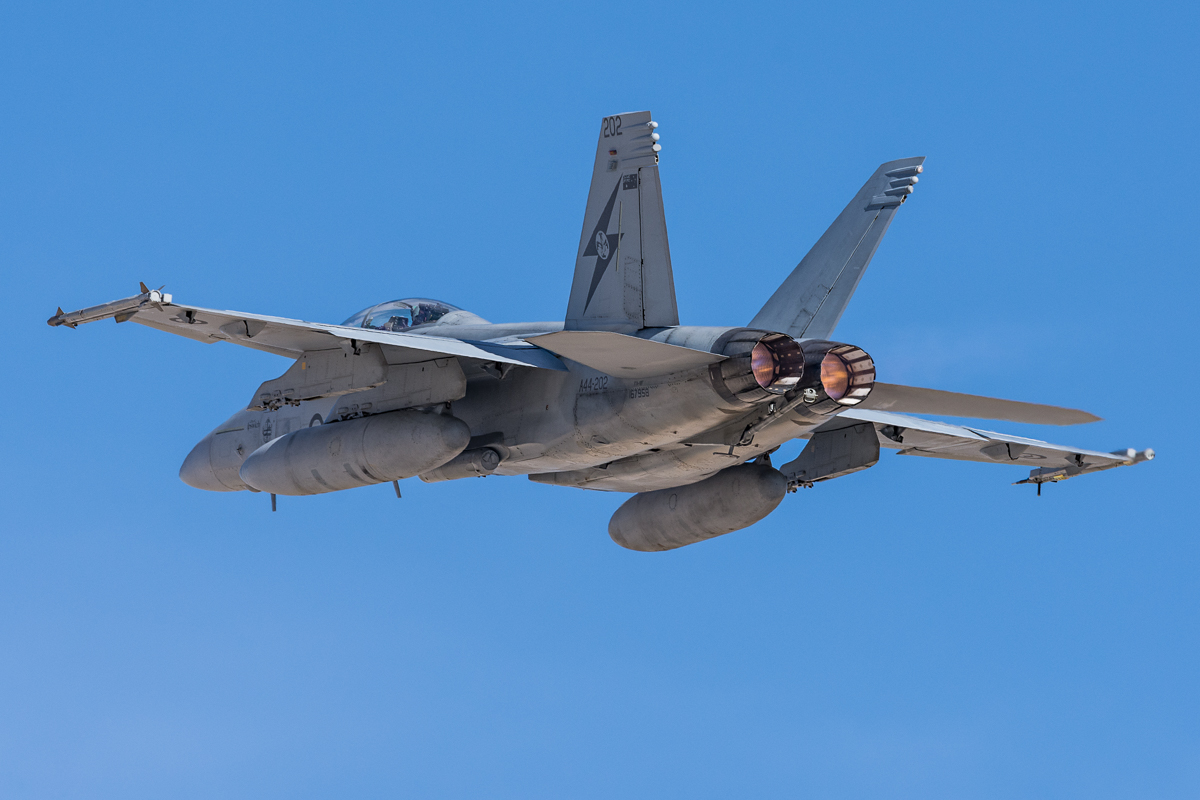
Located in the State of South Australia, RAAF Base Edinburgh’s No. 10 Squadron sent one AP-3C Orion to the exercise, Wing Commander Jason Begley lead the AP-3C Orion Detachment in conducting overland surveillance and dynamic targeting in the exercise area, he states what the Orion brings to an exercise such as Red Flag.
“The Orion, together with the Wedgetail AEW&C will help build ‘the big picture’ of what’s happening on the ground and in the air within the exercise area at Red Flag 16-1,” Wing Commander Begley said.
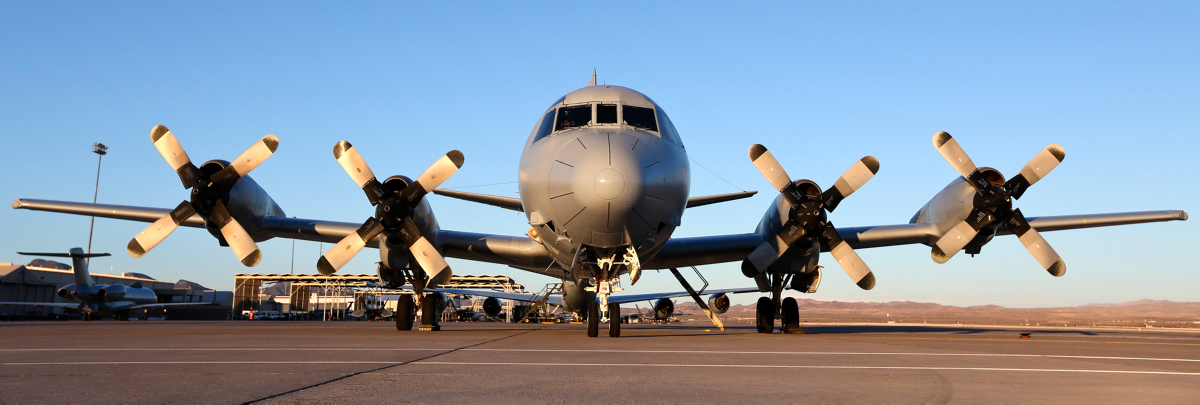
© Commonwealth of Australia, Department of Defence | Image by: CPL Nicci Freeman
“We’re coming to this exercise with considerable experience in this role, especially from Operation Slipper over Afghanistan where we have been deployed, where we supported coalition combat personnel on the ground. The scale and complexity of Exercise Red Flag makes it quite unique, so we stand to gain a lot of experience in working with allied partners”, he added.

© Commonwealth of Australia, Department of Defence | Image by: CPL Nicci Freeman
75 Squadron with their F/A-18A+ Hornet’s from RAAF Base Tindal located in the top end of Australia in the Northern Territory deployed to Nellis making the first time that Classic and Super Hornets from the RAAF had deployed to an overseas international exercise thus encompassing the whole Air Combat group spectrum employed by the RAAF. Commanding Officer of 75SQN WGCDR Mick states the significance of the deployment, “This is the first time that Australian F/A-18A’s and our F/A-18F’s have been together working in a Red Flag exercise, and this is what we call integrated operations. We go on to combine the strengths of both aircraft types to deliver an optimum outcome, and the great thing about Red Flag is that in Australian we just don’t have the capability to generate the shear number of air and surface threats the they have here for the exercise and here at Nellis. And it’s these threats that make the mission complex, and it tests our aircrew to the limits which is great to gain better experience.”
Lets do it Again
So as the sorties for Red Flag wound down with the last flight on February 12, and valuable experience and currency gained with over 130 aircraft and 3000 aircrew, Air Battle Managers, Intelligence and support staff from the US, UK and Australia all worked together to overcome a determined adversary in a challenging tactical scenario during the three week exercise.
The Australian contingent either made their way back home, or in the case of 1SQN continued to exercise Cope North held at Andersen AFB Guam. Reflection on a job well done by his team could certainly be contemplated by GPCAPT Gordon. “Exercise Red Flag provides the most realistic replication of airborne and surface to air threats enabling highly effective training and validation of our tactics,” Group Captain Gordon said.

“Short of actual combat, this is the ultimate test of coalition interoperability. The exercise scenario covered a variety of missions including defending against enemy air attacks, dynamic targeting against fleeting ground targets and traditional offensive strike roles.”
He Continues, “The ground players and systems on the range really exercised our intelligence, surveillance and reconnaissance and Command and Control assets to build a picture of the battle space, and enabled us to communicate the threats and strike targets, The exercise was a great success and we took away some excellent lessons.”
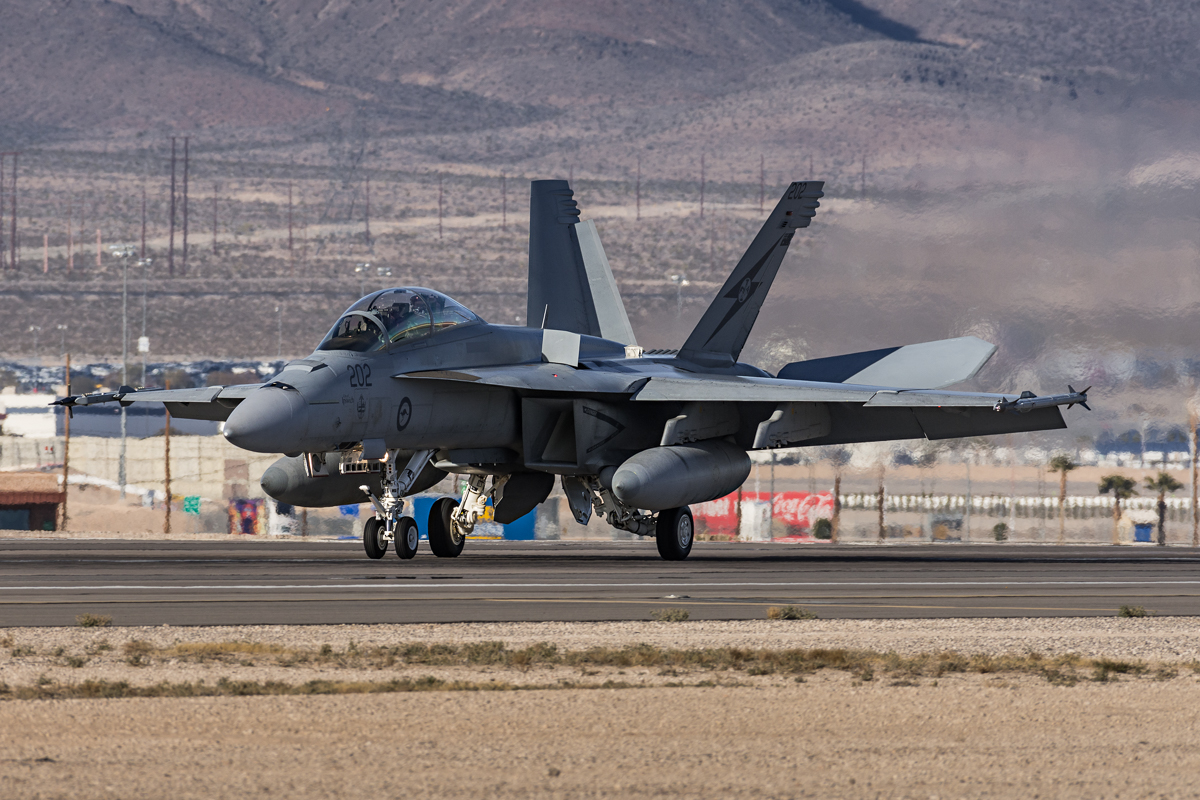
Red Flag directly complements Plan Jericho by allowing Air Force to understand how to better integrate advanced capabilities into our force structure. “There were assets playing in this exercise that we either don’t have in Australia, or that we are soon to introduce,” Group Captain Gordon said.
“We were flying alongside the F-22A Raptor which gives us valuable fifth generation integration experience as we prepare to introduce the F-35A Lightning II Joint Strike Fighter. The EA-18G Growler Airborne Electronic Attack aircraft also participated in the exercise.”
“It was pleasing to see one of the key package leads for the Growler was an Aussie Electronic Warfare Officer on exchange with the US Navy,” Group Captain Gordon said.
“This was an excellent opportunity to understand how to work with the Growlers effectively in what has been the largest and most successful Australian contribution to Exercise Red Flag to date. Our people performed admirably and earned the respect of the US and UK participants while operating in a highly integrated and networked battle-space that will set us in good stead for future operations.”
And so in a few months time RAAF personnel will begin again to plan for the next coalition-only Red Flag in 2017. After such a successful campaign on so many levels, providing valuable integration with their UK and U.S. counterparts, the RAAF can confidently say…we can’t wait to do it all again.
Aviation Photography Digest would like to THANK the following individuals:
- Group Captain Phil Gordon
- Wing Commander, 1 Squadron: Steve
- Wing Commander, 75 Squadron: Mick
- Wing Commander, 10 Squadron: Jason Begley
- Squadron Leader, 2 Squadron: Glenn Salmon
- Flight Lieutenant Natalie Giles
Click on an image below to be able to page through the gallery:
Jaryd Stock is based in Sydney Australia. He has been a die-hard aviation enthusiast from a young age when he was chauffeured around by his father to various airshows and airports around Australia. At his first Airshow he witnessed the awesomeness of a General Dynamics F-111C and immediately fell in love with aviation.
Jaryd picked up a camera at a young age and has never looked back. He now combines photography and writing to highlight “Downunder” aviation; especially U.S. DoD units. Jaryd uses Nikon cameras and lenses.


